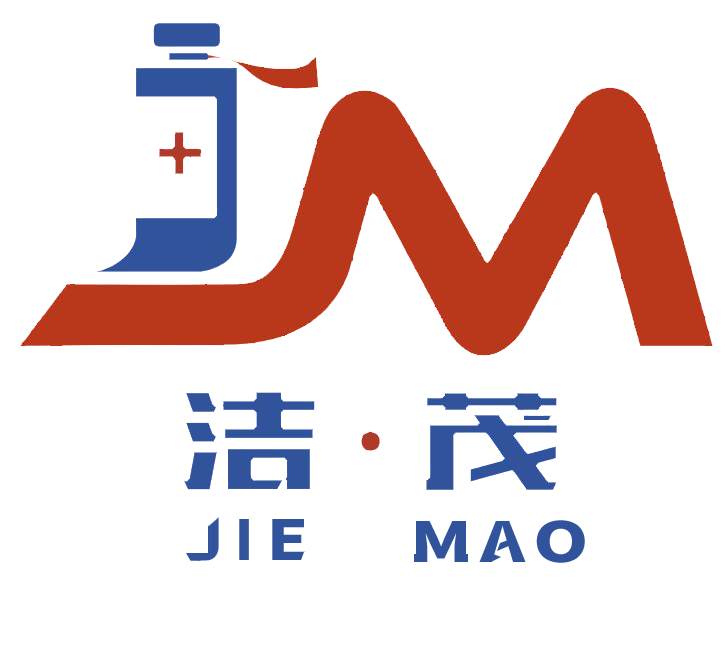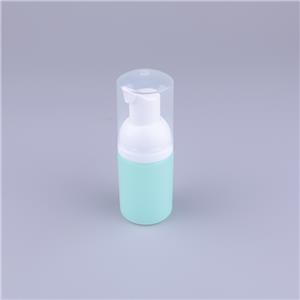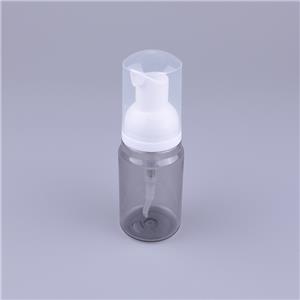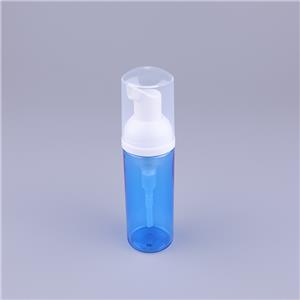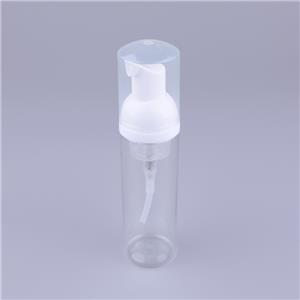- Home
- >
- News
- >
- Public Information
- >
- General plastic products: the basic material system that supports modern life
General plastic products: the basic material system that supports modern life
General plastics refer to a type of plastic with large production, wide applications, low prices, and moderate mechanical and heat resistance, mainly including five categories: polyethylene (PE), polypropylene (PP), polyvinyl chloride (PVC), polystyrene (PS), and acrylonitrile butadiene styrene copolymer (ABS). This type of material accounts for over 70% of the global plastic production. From everyday shopping bags and tableware to industrial pipelines and packaging, general-purpose plastic products have become indispensable basic materials for modern society's production and life due to their excellent processability, diversity, and economy.
1、 Core characteristics and classification system of general plastics
The universality of universal plastics stems from their balanced performance and wide adaptability. Different categories form complementary application scenarios through molecular structure differences, collectively forming a material system covering multiple fields.
Common features: yield and cost-effectiveness advantages
The five major general plastics all have the characteristics of abundant raw material sources (based on oil or natural gas), mature production processes (industrialized polymerization technology for more than half a century), and diverse processing methods (injection molding, blow molding, extrusion, etc.). Its annual production exceeds 10 million tons: PE and PP together account for more than 50% of global plastic production, PVC and PS each account for about 10%, and ABS accounts for about 5%. In terms of price, the price of general plastics is usually between 8000-20000 yuan per ton, which is only one-third to one-fifth of that of engineering plastics, making it suitable for large-scale, low-cost product production.
In terms of performance, although general plastics may not have the high strength and high temperature resistance of engineering plastics, they can meet most conventional requirements through modification: the temperature resistance range covers -70 ℃ to 120 ℃, the tensile strength is 10-50MPa, and the performance boundary can be expanded through toughening, reinforcement and other means. This "basic performance+modifiability" feature allows it to be used not only for making simple packaging products, but also for structural components through composite technology.
Individual differences among the five major categories
Different universal plastics have unique properties due to their different molecular structures:
Polyethylene (PE): The molecular chain is composed of carbon and hydrogen, with no polar groups. It has excellent chemical resistance, flexibility, and low temperature resistance, with a density of 0.91-0.97g/cm ³. It is the lightest universal plastic. According to density, it can be divided into three categories: low-density (LDPE, soft), high-density (HDPE, hard), and linear low-density (LLDPE, with outstanding toughness).
Polypropylene (PP): The molecular chain contains methyl side groups, with high crystallinity (50% -70%) and a melting point of 160-170 ℃. It is the only universal plastic that can withstand high temperatures above 100 ℃, with a density of 0.90-0.91g/cm ³. It is lighter than PE, has better rigidity, but has more obvious low-temperature brittleness.
Polyvinyl chloride (PVC): with a chlorine content of 56%, it has flame retardancy (oxygen index 24-28) and chemical corrosion resistance, and its performance can be controlled by plasticizers. Hard PVC (without plasticizers) has strong rigidity, while soft PVC (containing 30% -50% plasticizers) has good flexibility, but poor thermal stability and requires the addition of stabilizers.
Polystyrene (PS): The molecular chain contains benzene rings, with high rigidity and good transparency (GPPS transmittance of 90%), but it is brittle. By adding rubber phase, high impact polystyrene (HIPS) can be made, which increases the impact strength by 3-5 times, but reduces the transparency.
ABS: a ternary copolymer that combines the chemical resistance of acrylonitrile, the toughness of butadiene, and the processability of styrene. It has an impact strength of 10-40kJ/m ² and is easy to electroplate on the surface. It is the most balanced variety of general plastics in terms of performance and is often regarded as a "quasi engineering plastic".
2、 Main general plastic products and application scenarios
General plastic products have formed a full category system from films, pipes to structural components through diversified processing techniques, penetrating almost all industries such as packaging, building materials, automobiles, and daily necessities.
Packaging field: The largest application market
Packaging is the main application area of general plastics, accounting for over 40%. Various types of plastics replace traditional paper and glass packaging with their barrier properties, lightweight, and low-cost characteristics
PE products: LDPE film (thickness 0.01-0.1mm) is used for food bags and cling films, with self-adhesive and translucent properties; LLDPE stretch film (elongation of 500% -800%) is used for pallet wrapping packaging, with excellent tear resistance; HDPE bottles (capacity 500ml-20L) are used for packaging detergents and cosmetics, with both chemical resistance and rigidity.
PP products: BOPP film (biaxially oriented polypropylene, thickness 10-30 μ m) is used for biscuit and cigarette packaging, with high glossiness and good barrier properties; PP injection molded cups (such as yogurt cups, milk tea cups) can withstand high temperatures above 80 ℃ and are suitable for hot drinks; PP woven bags (with a load-bearing capacity of 5-50kg) are used for packaging fertilizers and grains, and their strength is 3-5 times that of paper bags.
PS products: GPPS vacuum formed box (thickness 0.2-1mm) is used for packaging fruits and electronic components, with good transparency; EPS foam box (density 10-30kg/m ³) is used for cold chain transportation, with excellent thermal insulation performance, and its cost is only 60% of that of polyurethane foam.
PVC products: PVC heat shrink film (shrinkage rate of 50% -70%) is used for beverage bottle labels, which tightly adhere after heating; PVC soft film is used for vacuum packaging of meat, with outstanding flexibility and sealing.
Architecture and Building Materials: Integration of Structure and Function
Universal plastics replace traditional materials (wood, metal, cement) in the construction industry with durability and ease of installation:
PVC products: Hard PVC pipes (diameter 16-630mm) account for 80% of the building drainage pipe market, are resistant to acid and alkali corrosion, and have a service life of over 50 years; PVC profiles (door and window frames, decorative lines) have been modified through formula, with a weather resistance of over 10 years and better insulation performance than aluminum alloys.
PE product: HDPE double wall corrugated pipe (diameter 200-2000mm) used for municipal drainage, with a ring stiffness of 8kN/m ² or above; PE-RT pipes (heat-resistant polyethylene) are used for underfloor heating and can withstand 70 ℃ hot water for a long time. They have good flexibility and are easy to bend and lay.
PP products: PP-R pipes (random copolymer polypropylene) are used for hot and cold water pipes, with convenient welding and hygienic performance that meets food standards; PP hollow board (thickness 2-10mm) is used for building formwork, weighing only 1/5 of steel formwork, and can be reused more than 50 times.
Automotive and Transportation Sector: Lightweight Main Force
General plastic is the core material for lightweighting automobiles, with a usage of 100-150kg per vehicle, accounting for 70% of the total plastic usage in the vehicle
PP products: accounting for 40% of the general plastic usage in automobiles, including bumpers (reinforced with 20% -30% talc powder), instrument panels (PP/EPDP blend), and door panels, reducing weight by 30% -50% compared to metal.
PE products: HDPE is used for oil tanks (improved oil resistance) and air ducts; LDPE is used for wire harness sheath, with good insulation and flexibility.
ABS products: used for car interior decoration parts (such as steering wheel, center console), the surface can be painted or electroplated, with both beauty and impact resistance; HIPS is used for interior door panel lining, with low cost and easy molding of complex shapes.
PVC products: used for automotive sealing strips (soft PVC) and foot mats (foam PVC), with weather resistance and wear resistance that meet the requirements of automotive use environments.
In the field of daily necessities and household appliances: diversified products that are close to life
Universal plastics, with their rich colors and easy processing characteristics, have become the main raw materials for daily necessities and household appliances
PP products: accounting for 30% of the daily necessities market, including fresh-keeping boxes (microwave resistant), toothbrush handles, hangers, high temperature resistant and not easy to breed bacteria; Home appliance components such as washing machine inner tube (reinforced PP) and air conditioning outer shell (flame-retardant PP).
PE products: LDPE hoses (such as toothpaste tubes and cosmetic hoses) can be extruded to extract the contents; HDPE drums (5-50L) are used for water and chemical storage, and are impact resistant and not easily broken.
PS products: GPPS made transparent stationery (rulers, folders), lampshades; HIPS is used for toys such as building blocks and dolls, with good toughness and easy coloring, meeting the safety standards for children's products.
ABS products: Home appliance casings (such as televisions and printers) account for 25% of ABS usage, providing both rigidity and shock resistance; Small household appliance components, such as juicer blade holders, are precision molded through injection molding.
3、 Production process: full chain processing from resin to product
The diversification of general plastic products stems from a mature processing system, from basic resin production to product molding, forming a standardized and large-scale industrial process.
Resin polymerization: industrialized mature process
The polymerization processes of the five general plastics have all been highly automated, and different varieties adopt differentiated technical routes:
PE: LDPE adopts high-pressure tubular method (100-300MPa, 200-300 ℃), with high degree of molecular chain branching; HDPE and LLDPE are produced by low-pressure method (0.1-5MPa) through slurry polymerization and gas-phase polymerization, respectively, with good molecular chain regularity.
PP: The mainstream process is gas-phase bulk polymerization (such as Spheripol process), which uses propylene as a monomer and polymerizes under the action of Ziegler Natta catalyst. Different melt index products are produced by regulating the molecular weight distribution.
PVC: Suspension polymerization is used for over 80%, and vinyl chloride monomer is dispersed into droplets in water, triggering polymerization to form resin powder with a particle size of 0.1-2mm. Subsequently, the soft and hard properties are adjusted by adding additives.
PS: GPPS adopts bulk polymerization, while HIPS introduces rubber phase (polybutadiene) through graft copolymerization, forming a "sea island structure" to enhance impact resistance.
ABS: The mainstream process is lotion grafting bulk blending method. First, butadiene rubber lotion is prepared, then grafted with styrene and acrylonitrile, and finally fused with SAN resin (styrene acrylonitrile copolymer).
Product Processing: Diversified Forming Technologies
The molding of general plastic products relies on four core processes, which can be selected according to the product form:
Extrusion molding: suitable for pipes (PVC pipes, PE pipes), sheets (PS boards, PP boards), and films (PE films, BOPP films). Molten plastic is extruded through molds using screws to continuously produce linear products at a speed of 10-100m/min.
Injection molding: used for 3D products (such as PP cups, ABS shells), injecting molten plastic into a closed mold, cooling and shaping it before demolding, with a short cycle (10-60 seconds/mold), suitable for mass production, and dimensional accuracy up to ± 0.1mm.
Blow molding: divided into hollow blow molding (such as HDPE bottles) and film blow molding (such as LDPE bags), the molten plastic is expanded and molded by air pressure, suitable for producing hollow products. The bottle production speed can reach 1000-6000 pieces/hour.
Foaming: It is used for PS foam and PE foam. By adding foaming agent (such as pentane), the closed cell structure is formed inside the plastic to reduce the density (to 0.01-0.1g/cm ³) and improve the heat insulation and cushioning performance.
During the processing, parameters need to be adjusted according to the characteristics of the plastic: PE and PP processing temperature should be 150-250 ℃, PVC should be controlled at 160-200 ℃ (to prevent decomposition), and PS and ABS processing temperature should be 200-250 ℃. By adding color masterbatch, antioxidants, lubricants and other additives, the product can achieve functions such as coloring, aging resistance, and easy demolding.
4、 Environmental challenges and sustainable development paths
General plastic products have long faced controversy over "white pollution" due to their large usage and difficulty in degradation. In recent years, through recycling, material innovation, and policy guidance, a sustainable development system has gradually been established.
Environmental Issues: Pollution and Governance Pressure
The environmental challenges of universal plastics are mainly reflected in three aspects:
Pollution of disposable products: disposable products such as PE plastic bags and PS foam lunch boxes have a short service life (only a few hours), but natural degradation takes hundreds of years. Random discarding leads to soil and marine pollution. Every year, about 8 million tons of plastic enter the sea.
The recycling system is not perfect: General plastic recycling mainly relies on physical recycling, but due to difficulties in classification (such as the similarity in appearance between PE and PP), high impurities, and large fluctuations in the quality of recycled materials, the global recycling rate is only 15% -20%, far lower than that of metals and glass.
Specific material risks: PVC contains chlorine, and if the temperature is insufficient during incineration, dioxins will be released; Traditional PS foam has large volume and high transportation and recovery cost; Some plasticizers, such as phthalates in PVC, pose a risk of endocrine disruption.
Recycling: Technological Upgrade from Physics to Chemistry
The general plastic recycling technology continues to advance, forming a multi-level recycling system:
Physical recycling: The most mature recycling method, waste products are sorted, cleaned, crushed, melted and granulated, and recycled PE can be used to make garbage bags and pipelines; Recycled PP is used for automotive interiors and plastic stools; Regenerated PS is used for photo frames and decorative strips. Through intelligent sorting technologies such as color selection and magnetic separation, sorting efficiency has been improved to over 90%.
Chemical recycling: For heavily polluted or mixed waste, plastics are decomposed into monomers or fuels through pyrolysis (300-800 ℃), such as PE and PP, which can be decomposed into gasoline and diesel components; PS can be depolymerized into styrene monomer with a purity of over 99%, and reused for polymerization to achieve closed-loop circulation.
Energy recovery: Waste that cannot be recovered is incinerated to generate electricity, with a calorific value of approximately 40MJ per kilogram of plastic (equivalent to 1.5 times that of coal), but requires supporting exhaust gas treatment facilities to control dioxin emissions.
Material Innovation: Alternative and Green Direction
The green innovation of general plastics focuses on three directions:
Degradable alternatives: introducing degradable components through blending or copolymerization, such as PE and PBAT (polybutylene adipate terephthalate) blended to make compostable plastic bags, which degrade in the natural environment for 6-12 months; PS is replaced by starch based foam for cushioning packaging.
Bio based universal plastics: Using biomass raw materials to produce plastics, such as bio based PE (using sugarcane ethanol as raw material) and bio based PP (using vegetable oil as raw material), the performance is consistent with traditional products, and the carbon footprint is reduced by more than 50%. Coca Cola, Nestle and other enterprises have already applied them on a large scale.
High performance reduction: Reduce material consumption through structural optimization, such as PET bottle lightweighting (from 30g to 9g); PP improves strength through nanocomposites, reducing product wall thickness by 20% while maintaining the same performance.
5、 Future Trends: Technological Iteration and Industrial Upgrading
General plastic products are developing towards the direction of "high performance, low consumption, and recyclability", and technological innovation and policy driven will reshape the industrial landscape.
Performance Upgrade: From Universal to Dedicated
Through precise modification, universal plastics gradually penetrate into the mid to high end field:
Functionalization: Develop antibacterial PE film (with added silver ions) for food preservation, extending shelf life by 3-5 days; Flame retardant PP is used for electronic packaging, reaching UL94 V0 level; Weather resistant PS extends its outdoor service life from 1 year to 5 years by adding UV absorbers.
Alloying: ABS/PC blend (ABS/PC alloy) enhances heat resistance and is used for new energy vehicle battery casings; PP/PA blend (PP/PA alloy) improves oil resistance and is used for engine components.
Circular Economy: Whole Life Cycle Management
Under policy promotion, the general plastic industry chain is transforming towards a closed-loop model:
Extended Producer Responsibility (EPR): Enterprises are required to take responsibility for product recycling, such as the EU's requirement for a plastic bottle recycling rate of 90% by 2030, China's "dual carbon" policy encouraging the use of recycled materials, and car companies' use of recycled plastics must reach 30% or more.
Chemical recycling scale: Million ton chemical recycling facilities have been built worldwide, such as Shell's PE/PP chemical recycling process, which can convert mixed waste into primary grade raw materials at a cost gradually approaching traditional processes.
Intelligent Production: Efficiency and Quality Improvement
Intelligent manufacturing technology empowers universal plastic production:
AI optimization: By optimizing injection parameters through machine learning, the scrap rate is reduced by 50%; Real time monitoring of preform thickness during blow molding process, automatic adjustment of air pressure, and improvement of wall thickness uniformity to within ± 5%.
Digital twin: Build virtual production models to simulate product performance under different raw materials and processes, and shorten the development cycle of new products (from 3 months to 1 month).
As the cornerstone of modern industry, the development of universal plastic products reflects the coordinated progress of materials science and social demand. From simple packaging to complex automotive components, from disposable products to recyclable materials, General Plastics is breaking through environmental bottlenecks through technological innovation and continuing to play an irreplaceable role in sustainable development. In the future, with the maturity of bio based materials, chemical recycling, and intelligent manufacturing, universal plastics will achieve a dual upgrade of "high performance" and "green", supporting a more environmentally friendly and efficient modern lifestyle.
